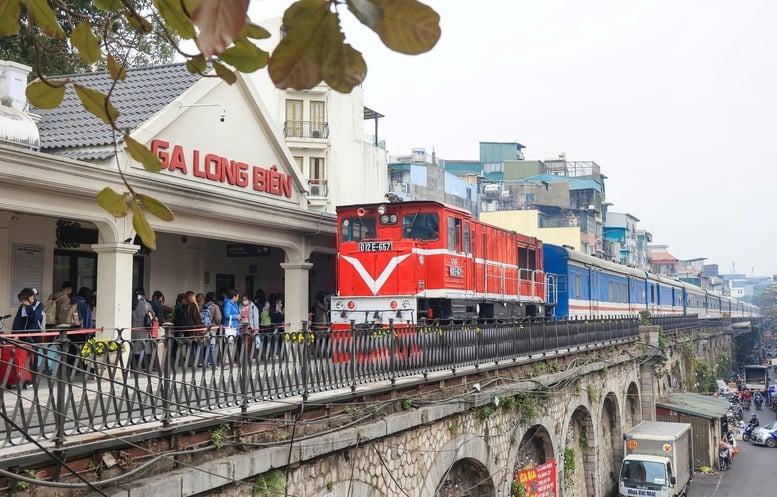
In addition to the stations included in the three major planned railway projects: Hanoi railway hub, Ho Chi Minh City railway hub and Lao Cai - Hanoi - Hai Phong - Ha Long route, many other stations also need to be included in the planning.
According to the planning consultancy consortium CCTDI - TRICC (Transportation Development Investment Consulting Center and Transport Investment and Construction Consulting Joint Stock Company), the Railway Network Planning for the period 2021 - 2030, with a vision to 2050, sets the goal that the national railway network must have the capacity to transport 11.8 million tons of goods (2.3 times higher than in 2019) and 21.5 million passengers (2.7 times higher).
To achieve this goal, in addition to renovating, upgrading and building new railway lines, planning to increase the throughput capacity of stations, especially urban stations, hub stations and international transit stations, is extremely necessary.
Currently, in addition to the stations included in three major planned railway projects including: Hanoi railway hub, Ho Chi Minh City railway hub and Lao Cai - Hanoi - Hai Phong - Ha Long route, many other stations also need to be included in the planning.
This is the legal basis for orienting land funds and planning infrastructure development investment, because many stations currently do not meet future transportation needs. The planning of stations also aims to ensure synchronization in land use, traffic connection and development of urban areas, functions according to the urban model of traffic-oriented development (TOD).
Many stations cannot meet future transportation needs.
Currently, the Hanoi - Dong Dang route mainly exploits Yen Vien and Dong Dang stations. Dong Dang, Yen Trach, Kep and Sen Ho stations are assessed to have potential for transport exploitation.
The Hanoi - Ho Chi Minh City route has 161 stations, of which 20 stations have a large number of passengers and cargo, from 50,000 to 1 million passengers, from 100,000 tons of cargo/year.
The Hanoi - Lao Cai route mainly operates at Yen Vien, Dong Anh, Xuan Giao and Lao Cai stations. The Hanoi - Hai Phong route has Gia Lam, Hai Duong and Hai Phong stations.
Regarding infrastructure, the roads leading to the passenger terminal are basically convenient, but the roads leading to the cargo yard are often narrow, due to sharing local roads. Large stations such as Vinh, Dieu Tri, Nha Trang, Thap Cham - associated with the number of tourists from 500,000 to 1 million/year - need to be renovated and expanded.
Stations with a large number of international transit passengers include Yen Trach, Dong Dang (nearly 3 million passengers/year) and Lao Cai (over 12 million passengers/year).
Regarding goods, Lao Cai, Dong Dang, and Vat Cach stations have an output of 2 million tons/year or more. Yen Trach, Truong Lam, Kim Lien, Dieu Tri, and Xuan Giao A stations have an output of 1-2 million tons/year. Some other stations such as Kep, Vinh, and Thap Cham also have a large output (over 500,000 tons/year).
Planning 21 key stations on 4 lines
From here, the Consultant proposes to plan 21 key stations on four railway lines in regular operation, including urban stations, hub stations and international transit stations (except for stations already included in separate planning projects mentioned above). Planning period up to 2030, vision to 2050.
Specifically, on the Hanoi - Dong Dang route, there are 4 planned stations (Dong Dang, Yen Trach, Kep, Sen Ho).
The Hanoi - Ho Chi Minh City route plans 12 stations (Ninh Binh, Truong Lam, Vinh, Dong Ha, Kim Lien, Dieu Tri, Nha Trang, Vinh Trung, Thap Cham, Ca Na...).
The Hanoi - Lao Cai route plans 4 stations (Lao Cai, Xuan Giao A, Viet Tri, Huong Canh) and the Hanoi - Hai Phong route plans 2 stations (Cao Xa, Vat Cach).
In which, international transit stations include Dong Dang, Kep, Sen Ho, Cao Xa, Lao Cai.
The consultant proposed to prioritize investment in stations with large cargo and passenger volumes (over 200,000 tons or passengers/year) and infrastructure bottlenecks that limit the capacity of the route. In addition, stations with potential for international freight transport and import-export services are also considered for investment.
Investment will be based on the transport forecast at each time. In case of changes in the actual exploitation scenario, it is possible to report to the competent authority to adjust the planning or decide on investment earlier. Existing stations will be renovated within the current boundary. If expansion is needed, there will be agreement with the locality or submission to the Prime Minister for consideration.
The role of each international transit station
Dong Dang Station (Lang Son): International transit station at the beginning of the border, with the capacity to receive 16 pairs of trains/day and night, loading and unloading 1 million tons/year. Performing many operations from receiving passengers, loading and unloading goods to international customs clearance.
Kep Station (Bac Giang): The junction station of three railway directions, serving international and domestic freight trains.
Sen Ho Station (Bac Giang): Connecting to Sen Ho dry port, serving international freight transport, loading and unloading capacity of 200,000 tons/year.
Lao Cai Station: International transit station at the beginning of the border, connecting to 1000 mm gauge. After 2030, the station can receive 20 pairs of trains/day and night, loading and unloading 3 million tons/year and 2 million passengers/year.
Cao Xa Station (Hai Duong): Mixed station, participating in international freight transport.
Phan Trang
Source: https://baochinhphu.vn/quy-hoach-21-nha-ga-trong-diem-tren-4-tuyen-duong-sat-102250414075137807.htm



![[Photo] Performance of the Air Force Squadron at the 50th Anniversary of the Liberation of the South and National Reunification Day](https://vphoto.vietnam.vn/thumb/1200x675/vietnam/resource/IMAGE/2025/4/30/cb781ed625fc4774bb82982d31bead1e)

![[Photo] Cultural, sports and media bloc at the 50th Anniversary of Southern Liberation and National Reunification Day](https://vphoto.vietnam.vn/thumb/1200x675/vietnam/resource/IMAGE/2025/4/30/8a22f876e8d24890be2ae3d88c9b201c)
![[Photo] Chinese, Lao, and Cambodian troops participate in the parade to celebrate the 50th anniversary of the Liberation of the South and National Reunification Day](https://vphoto.vietnam.vn/thumb/1200x675/vietnam/resource/IMAGE/2025/4/30/30d2204b414549cfb5dc784544a72dee)

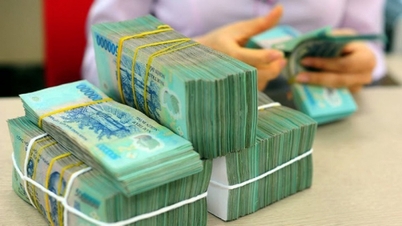


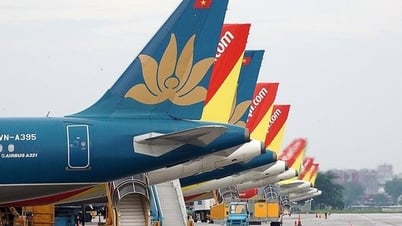
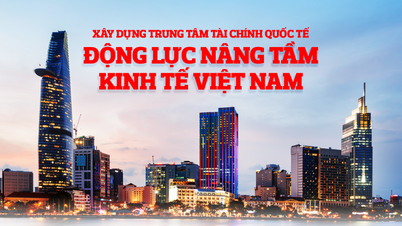








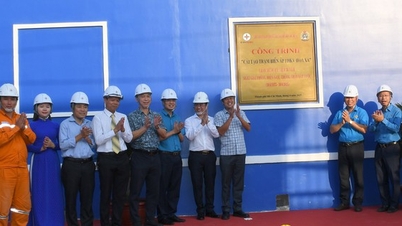


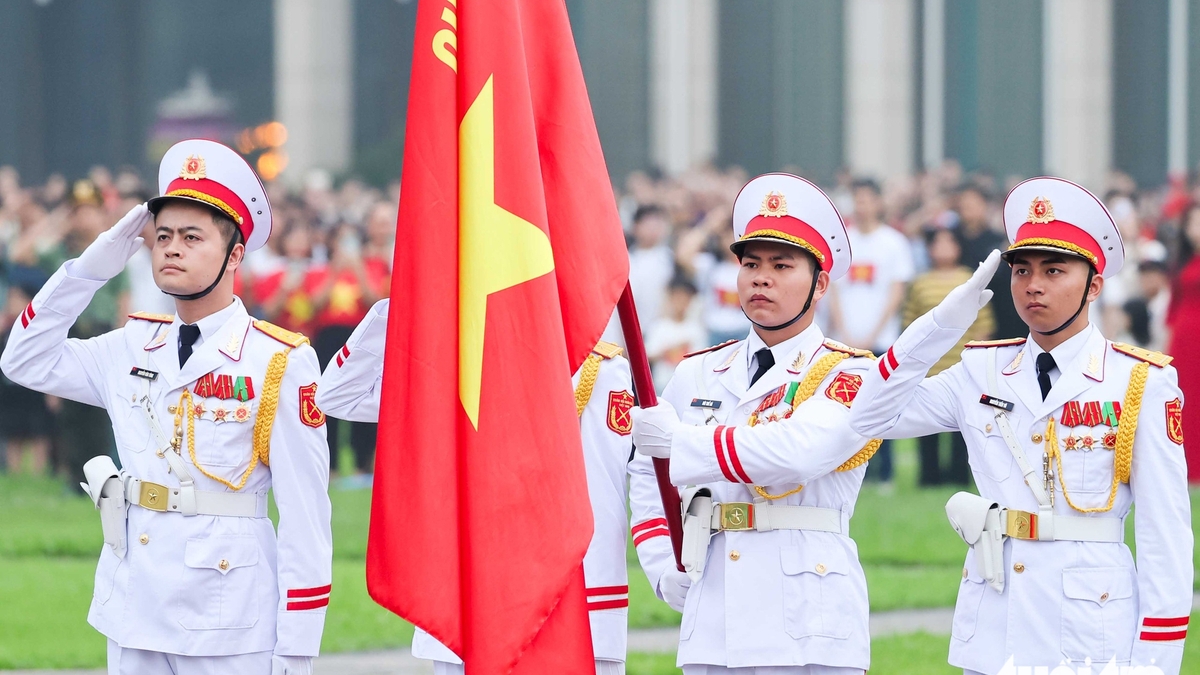















































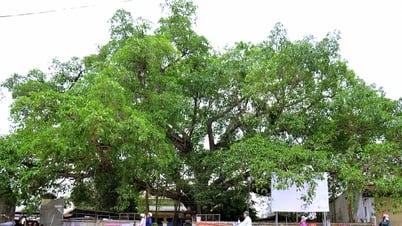





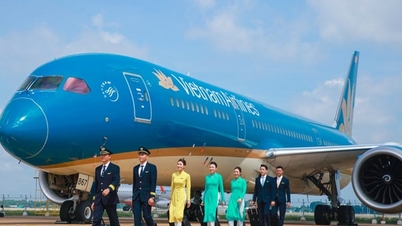













Comment (0)